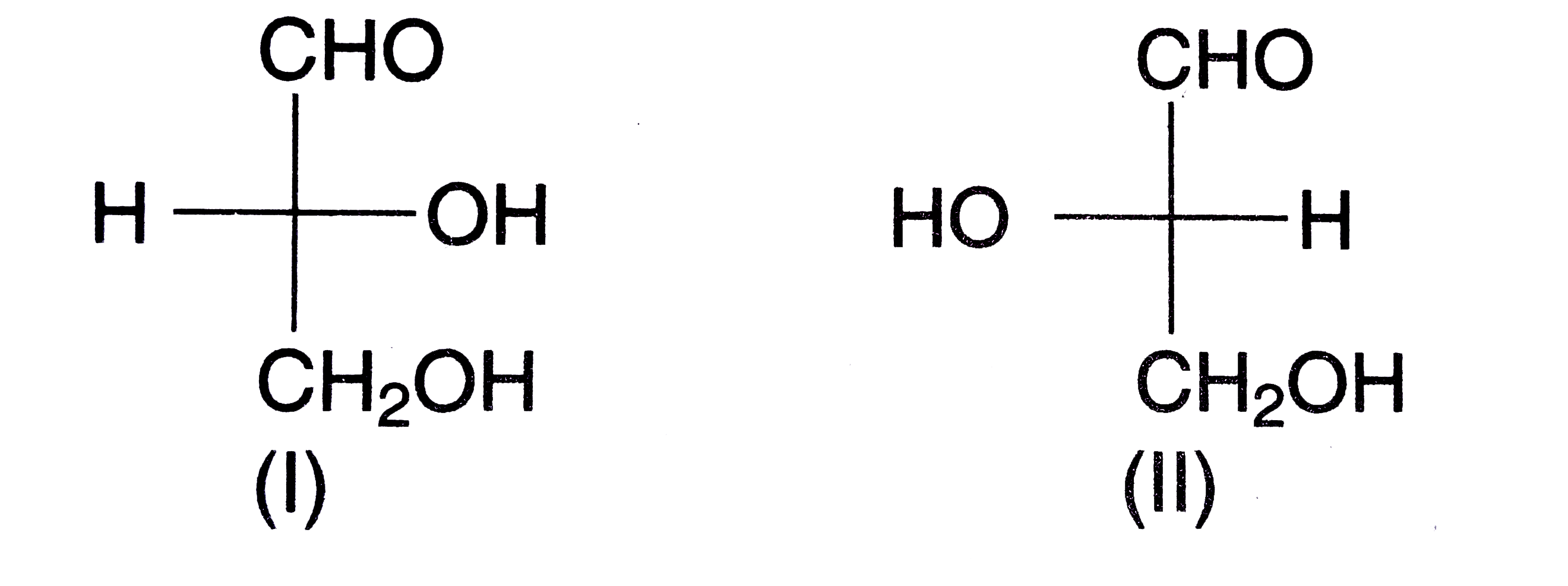Complete Solutions to EXERCISE 2 of chapter BIOMOLECULES of Class 12 book with complete answers and questions
| Class 12 | CHEMISTRY |
| Chapter | BIOMOLECULES |
| MHTCET PREP GUIDE | EXERCISE 2 |
| Number Of Questions | 60 |
| Academic Year | 2023-24 |
Which of the following reactions of glucose can be explained only by its cyclic structure?
View SolutionWhich of the following statement is false about the given structure?

View SolutionName the reagent following reaction.
`{:(undersetunderset(" "CH_2OH)(|)oversetoverset(" "CHO)|(" "(CHOH)_4),to, underset"n-hexane"(CH_3-(--CH_2--)CH_3)):}`
Choose the correct option.
View SolutionConsider the following statements: I. Glucose occur freely in nature. II. Glucose occur in the combined form.
lll. Glucose present in sweet fruits and honey.
IV. Ripe grapes contain glucose in large amounts.
Select the correct statement(s) and choose the most appropriate option.
View SolutionSucrose (cane sugar) is a disaccharide. One molecule of sucrose on hydrolysis gives
View SolutionCheilosis and digestive disorders are due to the deficiency of
View SolutionWhich one of the following pair is the reducing sugar?
View SolutionA polysaccharide is composed only of `beta`-D-glucose units which are joined by glycosidic linkage between C-1 of one glucose unit and C-4 of the next glucose unit. Name the polysaccharide.
View SolutionWhat is the product treated with `Br_2` water?
View SolutionName the molecule which is eliminated during the formation of peptide bond.
View Solution"When the polypeptide chains run parallel and are held together by hydrogen and disulphide bonds, then fibre like structure is formed. Such proteins are generally insoluble in water."
Name the type of protein which favours the above information.
View SolutionWhich one of the following amino acid has phenyl OH group?
View SolutionA tripeptide is composed equally of L-tyrosine, L-glycine and L-valine (one molecule of each). How many number of tripeptides can be obtained?
View SolutionWhat is/are the products(s) formed in the anaerobic degradation of glucose?
View SolutionWhich of the following disease(s) is/are caused by the deficiency of the enzyme phenyl ketone urea?
View SolutionConsider the following statements :
I. Vitamins are the organic compounds required in small amounts in the diet but their deficiency causes specific disease.
II. Vitamins cannot be synthesised by plant but our body can only synthesise them.
III. Some of the vitamins are produced by the bacteria's gut.
IV. Vitamins are necessary to perform the specific biological functions tor the normal maintenance of optimum growth and health of the organism.
Select the false statement about the vitamins and choose the correct option.
View SolutionWhich one of the following reagent is used to determine the C-terminal end in a polypeptide?
View SolutionWhich of the following product is formed during the oxidation of glucose by Fehling's solution and Benedict's solution?
View Solution`R-overset+overset(NH_3)overset|CH-COO^(-) overset(pH=12)to R-oversetoverset(NH_2)|CH-COO^(-) overset(H^+) to Z ` compound Z is
View SolutionDeficiency of biotin causes dermatitis and paralysis, biotin is also known as
View SolutionWhat would be the product formed during the reaction?
`underset"(Glucose)"(C_6H_12O_6) underset((ii)H_2O (iii)HI)overset((i)HCN)to`
View SolutionOsazone formation involves only 2 carbon atoms of glucose because of
View SolutionDinucleotide is obtained by joining two nucleotides together by phosphodiester linkage. Between which carbon atoms of pentose sugars of nucleotides are these linkages present?
View SolutionThe product of the reaction,
D-glyceraldehyde `underset"HCl"overset(Me_2CO)to overset(H_2C=CHMgCl)to overset(O_3)to ` is/are ?
View SolutionA mixture of two amino acids having pl 9.60 and 5.40 can be separated
View SolutionIf `K_(a_1)` and `K_(a_2)` are the ionisation constant of `H_3overset+NCHRCOOH` and `H_2NCHRCOO^(-)`, respectively the pH of the solution at the isoelectric point is
View SolutionIn both . DNA and RNA, heterocyclic base and phosphate ester linkages are at
View SolutionThe tripeptide hormone present in most living cells is
View SolutionGlucose reacts with methyl alcohol to give
View SolutionWhich of the following is an example of ketohexose?
View SolutionA certain compound gives negative test with ninhydrin and positive test with Benedict's solution, it is
View SolutionWhich of the following compounds can be detected by Molisch's test?
View SolutionWhich of the following is a simplest aminoacid?
View SolutionWhich ·one of the following statements is correct?
View SolutionSucrose is not a reducing sugar since
View SolutionVitamin `B_6` is known as
View SolutionWhich one of the following bases is not present in DNA?
View SolutionWhich of the following statement is incorrect?
View SolutionIn DNA, the consecutive deoxynucleotides are connected via
View SolutionWhich of the following is incorrect?
View SolutionThe carbohydrate used as storage molecule in animal is
View SolutionWhich of the following amino acid is neutral?
View SolutionThe presence or absence of hydroxy group on which carbon atom of sugar differentiates RNA and DNA
View SolutionThe two functional groups present in a typical carbohydrate are
View SolutionThe primary structure of a protein refers to
View SolutionWhich one of the following statements about amino acids is false?
View SolutionDuring the process of digestion, the proteins present in food materials are hydrolysed to amino acids. The two enzymes A and B, involved in the process
proteins `overset"Enzyme (A)"to ` polypeptides `overset"Enzyme (B)"to` amino acids, respectively are
View SolutionThe pH value of the solution in which a particular amino acid does not migrate under the influence of an electric field is called the
View SolutionMethyl-`alpha`-D-glucoside and methyl-`beta`-D-glucoside are
View SolutionHow many hydrogen bonds are present between pair of thymine and adenine in DNA?
View SolutionWhich of the following statements is incorrect?
View SolutionWhich one of the following statements is incorrect for the sucrose?
View SolutionWhich of the following does not form an oxime?
View SolutionProteins when heated with cone. `HNO_3` give a yellow colour. This is
View SolutionThe enzyme which hydrolysis triglycerides to fatty acids and glycerol is called
View SolutionThe enzyme pepsin hydrolyses
View SolutionEnzyme trypsin converts
View SolutionDeficiency of vitamin A causes
View SolutionExposure of sunlight help to synthesise which vitamin in our body?
View SolutionCortisone is
View Solution
EXERCISE 2 questions and complete solutions for chapter BIOMOLECULES of MHTCET PREVIOUS YEAR PAPERS AND PRACTICE PAPERS of Class 12